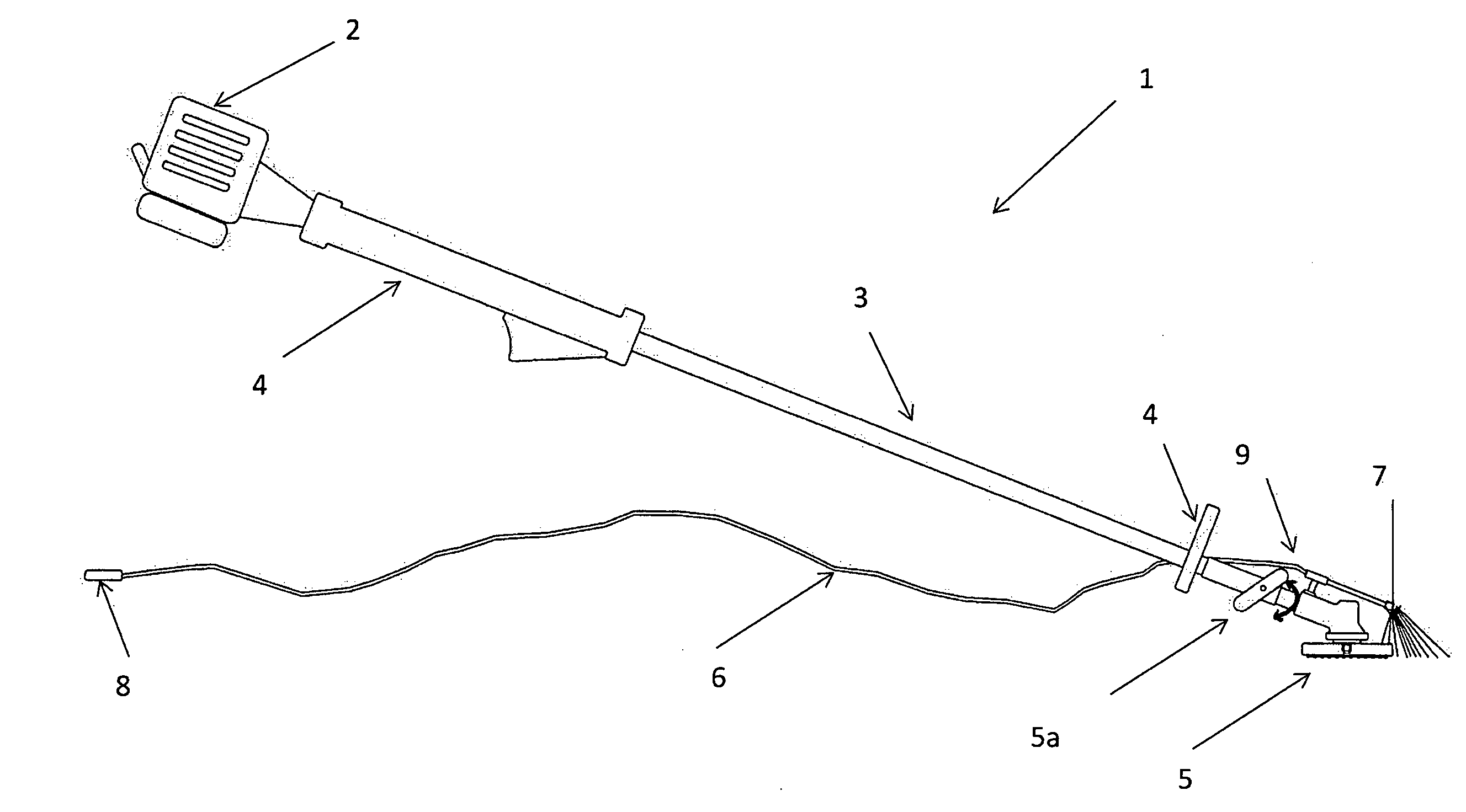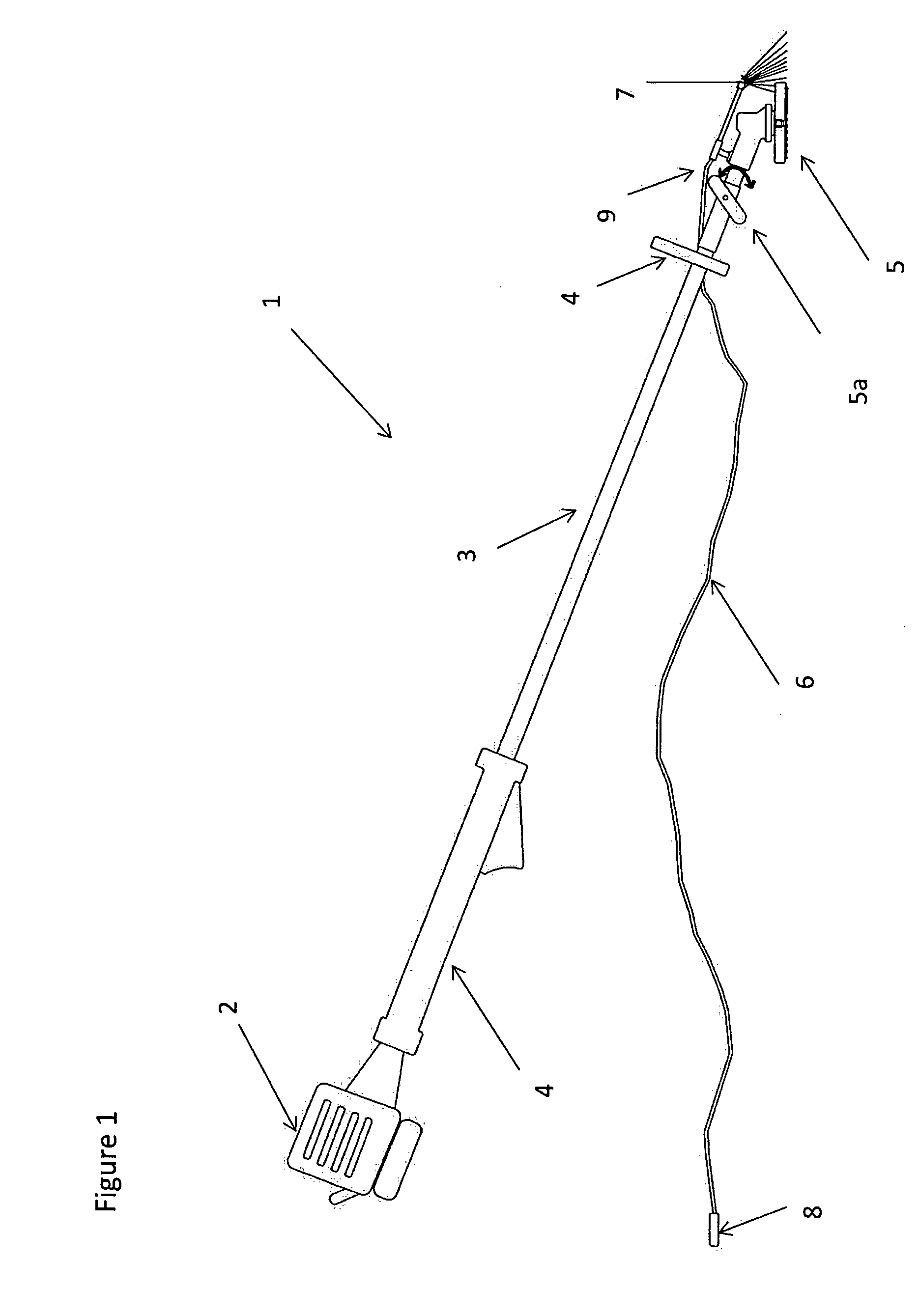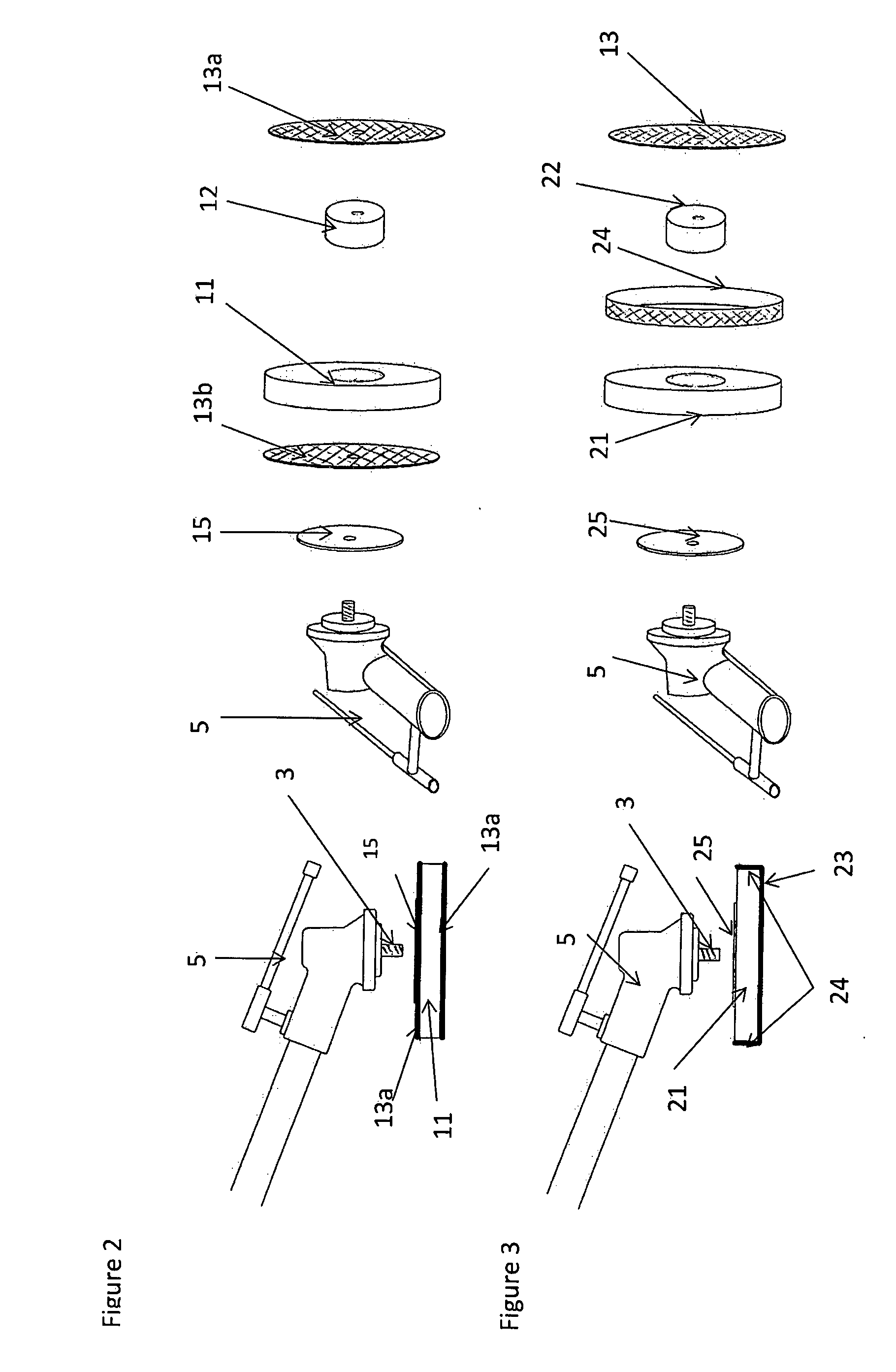Abrasive apparatus and components thereof
- Summary
- Abstract
- Description
- Claims
- Application Information
AI Technical Summary
Benefits of technology
Problems solved by technology
Method used
Image
Examples
Embodiment Construction
[0111]FIG. 1 shows a side view of an abrasive apparatus as provided in accordance with a preferred embodiment of the invention.
[0112]The apparatus 1 incorporates a drive system, shown in this embodiment as a 45 cc petrol engine 2 linked to an extended internal drive shaft 3 with a set of handles 4 extending to the sides of the drive shaft. The drive shaft 3 terminates in a working head 5 where this working head is arranged to receive and connect to an abrasive attachment as discussed with respect to FIGS. 2 through 6. The working head 5 is engaged to the end of the internal drive shaft by a rotatable gear box coupling 5a. This coupling allows the orientation of the working head to be adjusted relative to the shaft by 90 degree intervals.
[0113]When the apparatus is used to abrade or sand a surface the petrol engine 2 is adapted to rotate portions of the drive shaft 3 to rotate an abrasive attachment associated with the working head 5.
[0114]When the apparatus is used a fluid supply co...
PUM
 Login to View More
Login to View More Abstract
Description
Claims
Application Information
 Login to View More
Login to View More - R&D
- Intellectual Property
- Life Sciences
- Materials
- Tech Scout
- Unparalleled Data Quality
- Higher Quality Content
- 60% Fewer Hallucinations
Browse by: Latest US Patents, China's latest patents, Technical Efficacy Thesaurus, Application Domain, Technology Topic, Popular Technical Reports.
© 2025 PatSnap. All rights reserved.Legal|Privacy policy|Modern Slavery Act Transparency Statement|Sitemap|About US| Contact US: help@patsnap.com



